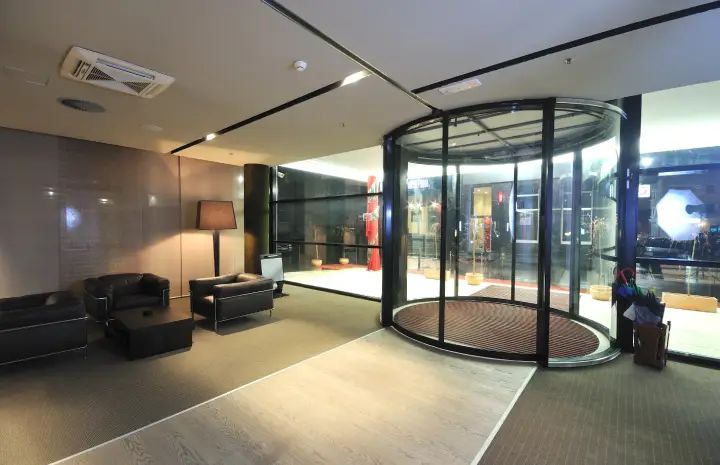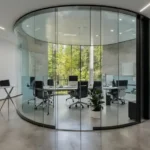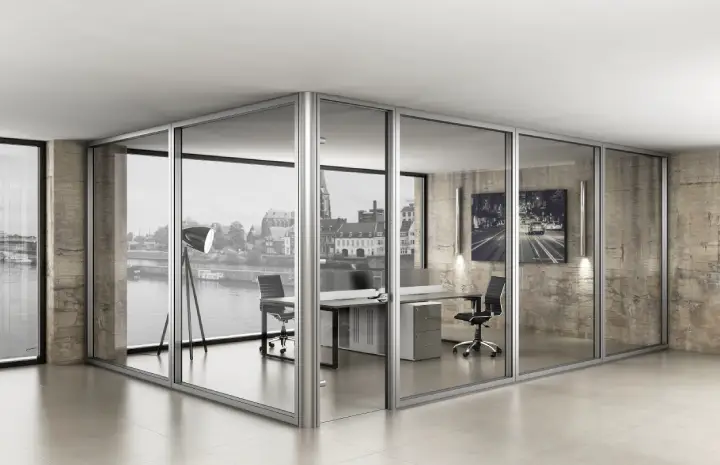Art of Glass Wall Design: How Curved Shapes Elevate Interiors
In contemporary architecture and interior design, glass has evolved far beyond being a mere structural or decorative element. Today, it defines transparency, light, and openness — shaping how spaces look, feel, and interact with natural surroundings. Among its most elegant innovations, the curved glass wall has become a symbol of sophistication and spatial harmony.
Whether in offices, hotels, showrooms, or residential interiors, curved glass introduces fluid movement, breaking away from traditional linear layouts. It transforms ordinary spaces into architectural statements, merging art and engineering into one seamless design expression.
The Evolution of Glass in Modern Design
Glass has long been celebrated for its ability to connect interiors with the outside world, but the rise of architectural innovation has given birth to new possibilities. Straight panels once dominated design, offering transparency but often feeling rigid and predictable.
The curved glass wall changed that dynamic. Its smooth lines and organic forms create continuity, softening the harshness of modern materials like steel and concrete. Instead of dividing space, it flows through it, reflecting a natural balance between functionality and artistry.
This evolution marks a shift in how designers approach interior composition — moving from rigid geometry to dynamic curvature that enhances both aesthetics and atmosphere.
Why Curved Glass Walls Are Transformative
Curved glass isn’t just a stylistic choice; it’s an architectural philosophy that influences the perception of space. Here’s how it elevates interiors on multiple levels:
- Fluidity and Movement
The gentle curvature of glass introduces motion to static spaces. A curved glass wall leads the eye gracefully through the room, guiding flow and rhythm while eliminating visual barriers. This makes interiors feel alive and continuous, rather than segmented or confined. - Softened Geometry
Most buildings are constructed with sharp angles and straight lines. Curves bring softness and balance, making spaces more welcoming. The rounded edges reduce visual tension and create a sense of calm and comfort — ideal for workspaces, lounges, or luxury homes. - Light Diffusion and Reflection
Glass has a unique relationship with light, and when curved, it enhances that relationship even further. The curvature refracts and scatters natural light, creating subtle gradients and reflections that enrich the overall ambiance. A well-placed curved glass wall can brighten dark corners and create a luminous, airy atmosphere. - Architectural Focal Point
Curved glass naturally attracts attention. It becomes an architectural centerpiece that defines the tone of the entire space. Whether forming an elegant boardroom enclosure, a sweeping hotel lobby partition, or a curved staircase balustrade, it adds visual depth and luxury without being overwhelming.
Applications of Curved Glass Walls in Interior Spaces
The versatility of curved glass walls makes them suitable for a wide range of environments:
- Corporate Offices: Used to create meeting rooms and collaborative zones without blocking natural light.
- Residential Homes: Adds sophistication to living rooms, balconies, and staircases while maintaining openness.
- Hospitality Spaces: Hotels, restaurants, and lounges use curved glass to enhance flow and create immersive guest experiences.
- Retail Stores: Highlight product displays with clear curved glass enclosures that enhance visibility and aesthetic appeal.
- Public Buildings: Museums, galleries, and airports use curved glass to combine durability with artistic form.
In each setting, the glass wall functions as both a divider and a unifier — defining boundaries while maintaining connection.
The Artistic Psychology of Curves
Curves have always been associated with softness, elegance, and natural beauty. Unlike straight lines, they evoke emotion and movement, mimicking organic forms found in nature — from waves to leaves and clouds.
In design psychology, curved forms are known to make people feel more relaxed and comfortable. When used in interiors, a curved glass wall subtly influences mood by reducing the rigidity of the environment. The result is a space that feels both dynamic and soothing — a blend of creativity and calm.
Technical Innovation Behind Curved Glass Walls
Behind the elegance of curvature lies remarkable engineering precision. Modern glass bending technology allows for custom shaping without compromising strength or clarity.
Manufacturers use heat-forming or cold-bending techniques depending on the design’s radius and purpose. Advanced tempering processes ensure durability, making curved glass suitable for both load-bearing and aesthetic applications.
A curved glass wall can be fully frameless, semi-framed, or supported by minimal profiles, depending on structural needs. This flexibility enables architects to achieve sleek, uninterrupted surfaces that complement minimalist or high-end interiors.
Balancing Function and Aesthetics
While aesthetics often take the spotlight, functionality is equally important. Curved glass can integrate acoustic control, thermal insulation, and even privacy options without losing its elegance.
For workplaces, laminated acoustic glass helps maintain quiet zones while retaining visual openness. In homes, frosted or tinted finishes enhance privacy while preserving light transmission. This fusion of design and utility is what makes curved glass walls both beautiful and practical.
Maintenance and Durability Advantages
Modern curved glass is built for longevity. Tempered and laminated variants resist impacts, scratches, and environmental wear. Regular cleaning with non-abrasive materials is enough to maintain its brilliance.
Unlike traditional walls that need repainting or repairs, curved glass walls retain their clarity and structure for years, making them a cost-effective long-term investment.
Design Inspiration: Blending Light, Space, and Emotion
The most inspiring interiors use glass not just for visibility but for storytelling. Curved glass creates an interplay of reflections, transparency, and light diffusion — turning every wall into a living artwork.
A curved glass meeting room with soft LED backlighting can convey modernity and trust. A residential living area surrounded by a panoramic curved façade can connect inhabitants with the outdoors. Every installation tells a story — of innovation, emotion, and architectural craftsmanship.
Sustainability Aspect of Curved Glass Walls
Sustainability has become integral to modern design, and glass plays a key role. Curved glass allows more natural light to penetrate, reducing dependence on artificial lighting and saving energy.
When combined with energy-efficient coatings, a curved glass wall helps regulate indoor temperatures and minimize carbon footprint. Additionally, glass is recyclable, aligning with eco-conscious construction practices and green building standards.
The Future of Interior Architecture with Curved Glass
As architecture continues to embrace organic forms, curved glass will remain central to design innovation. Future interiors will rely even more on flexibility, adaptability, and aesthetic storytelling — all traits that curved glass embodies effortlessly.
Advancements in manufacturing now make it possible to produce complex shapes at lower costs, making these designs more accessible. The result? Spaces that flow naturally, connect emotionally, and inspire visually.
Conclusion
The curved glass wall represents the perfect harmony of art and architecture — a design element that reshapes perception and redefines spatial experience. Its ability to merge transparency with movement gives interiors a timeless allure.
Incorporating curved glass isn’t just about style; it’s about creating emotional resonance through design. It allows light to breathe, lines to soften, and interiors to transcend their boundaries.
Every curve tells a story — one of craftsmanship, creativity, and modern sophistication. And as interior design continues to evolve, curved glass will remain at the forefront, shaping the future of beautiful, fluid, and inspiring spaces.




